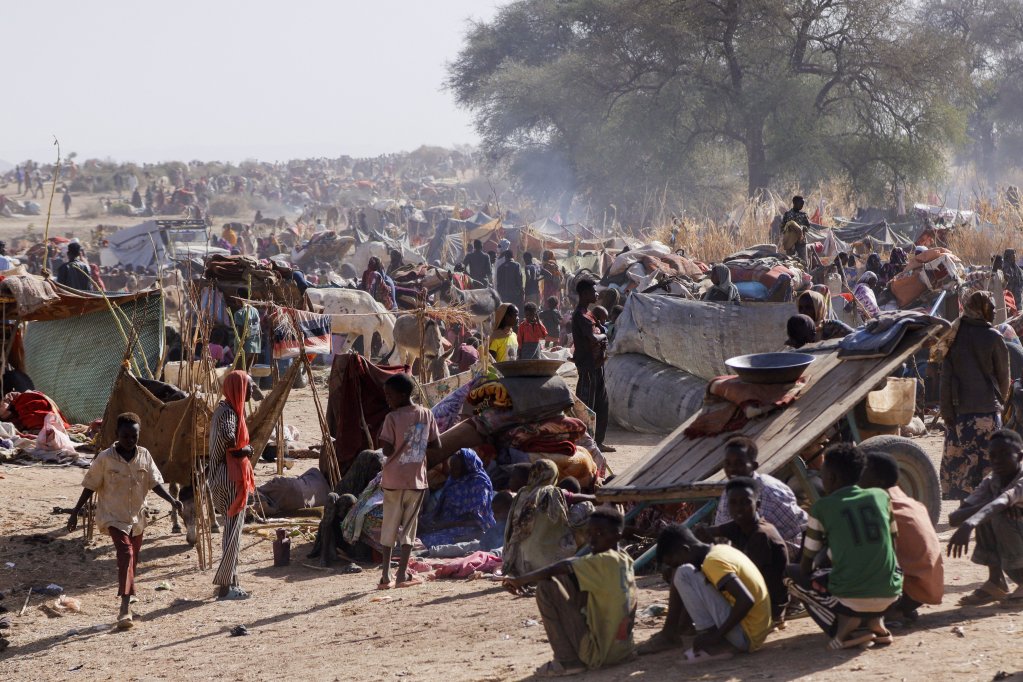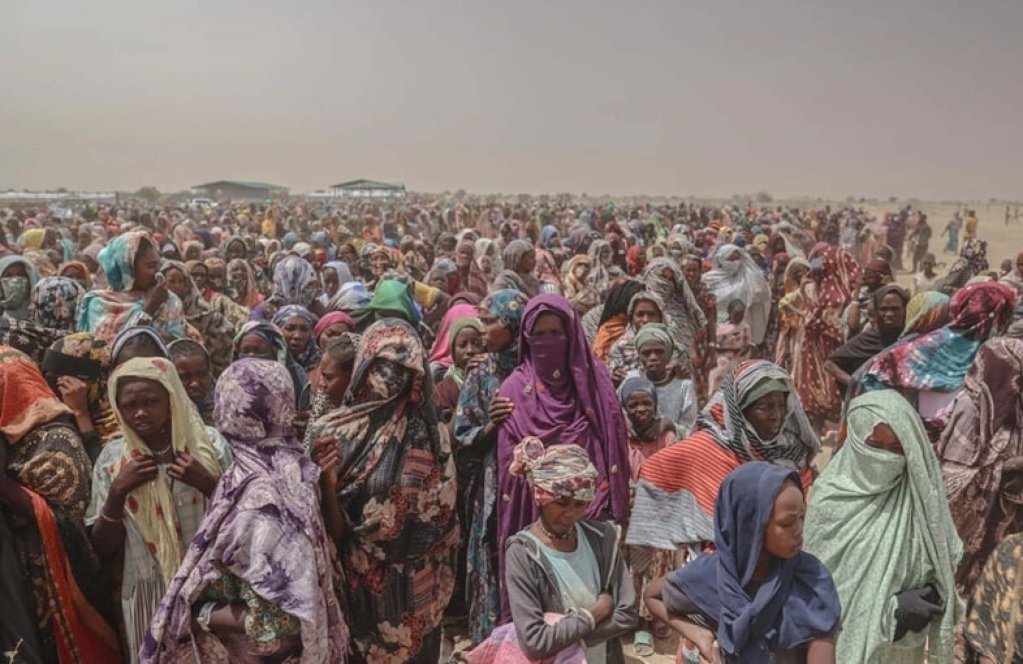Since the beginning of fighting in 2023, the war in Sudan has displaced nearly 13 million people. Half a million people have crossed the border with Chad, west of Sudan, to shelter from the violence. Sarra Majdoub, independent researcher and former UN Security Council expert on Sudan, explained to InfoMigrants the specificities of these waves of displacement.
Since April 2023, Sudan is overcome with fighting between General Abdel Fattah Al-Bourhane’s Sudanese Armed Forces (SAF) and General Mohammed Hamdan Daglo's (aka Hemetti) Rapid Support Forces (RSF) paramilitary.
Two and a half years since the beginning of the conflict, the UN estimates that more than 150,000 people have died and 13 million have been displaced, including 8.6 million inside the country and more than 4 million in neighboring countries.
On October 26, the capture of El-Fasher -- the capital of Northern Darfur -- by the RSF, after months of siege, came with mass massacres and sparked a new wave of displacement towards to city of Tawila.
InfoMigrants: There are today nearly 13 million displaced people in Sudan since the beginning of the fighting in April 2023. Why is this number so high?
Sarra Majdoub: These displacements can be explained by the scale of violence and fighting, which affected the capital city but also other regions, used to violence, like Darfur, or Kordofan, in Western and Central Sudan. In Sudan, almost all regions are affected by violence, even those we thought were safer, like the capital city.
This led to a quick and large displacement of people. Some who had never experienced displacement before, especially middle-class people, ended up fleeing from one day to the next.
There are also regions, like Darfur, where people end up on the road for the third, fourth, fifth time, and displaced people camp that were forced to relocate again.
Sudan has been at war for 50 years. Darfur has been experiencing cycles of violence in 2003 and 2007. But until then, war had been confined to the periphery. It is the first time fighting moves to the center of the country and to the capital city.
IM: The capture of El-Fasher by the RSF has led to a lot of people fleeing for their lives. What have been the previous large-scale waves of displacement since the beginning of the fighting in April 2023?
SM: There was the fighting in Al Geneina city, in Western Darfur, between April and June 2023, which led to the death of nearly 15,000 people in two weeks. Over this time period, ethnic violence pushed half a million people out, fleeing east to neighboring Chad.
And this violence had already affected people displaced between 2019 and 2021.
There was also an important wave of displacement when the RSF took over a few cities in the center of the country, especially Wad Madani, in Al Jazira state, in December 2023.
Nearly 300,000 were displaced then, according to the UN. The town, 200km south of Karthoum, was then retaken from the RSF by the Sudanese Army in January 2025.

IM: How do people decide where to go?
SM: Most people -- nearly 10 million -- moved inside the country. They go where they have family, where it is the easiest for them.
For many, it’s a very precarious itinerary. They have almost nothing, and leave without knowing where they’ll go. They most often settle randomly, where they find security.
You can also notice some differences between social classes. Many have fled towards Egypt, especially middle-class people.
Leaving from Darfur, many have gone to Chad because the border is only 20km away from Al Genaina, in Darfur. The inhabitants of El-Fasher, meanwhile, moved 60 kilometers to the town of Tawila. Right now, there are more than 600,000 people in that town.
IM: Do displaced people have access to humanitarian help?
SM: Access to humanitarian aid depends on the region displaced people are in; if they are near frontlines, access is limited or non-existent. The humanitarian question is tied to security and political issues: different parties to the conflict use aid access to gain more support. And to access one zone from another, negotiations are difficult.
IM: Some Sudanese people left Sudan and are trying to settle in a neighboring country or in the EU. Some Western countries are worried about these population movements. What’s your reaction to this?
SM: In my opinion, these worries are unfounded. I even find it shameful and ridiculous that the potential arrival of Sudanese in Europe is the only thing that worries Western officials. I want to remind you that the conflict in Sudan has caused the death of 150,000 people and displaced 13 million. It’s one of the worst humanitarian crises in the last 20 years.

I think we should shift our focus from the question of migration towards what is happening inside the country, and watch how a country like Chad is able to welcome half a million people. People who left for Libya -- part of them potentially on their way to Europe -- remain a marginal share of the people who fled the war in Sudan.
This is a crisis that requires us to consider its origins and complexity. More than 8 million internally displaced people live in deplorable conditions. Most of them are families and elderly people. Looking at this as a threat is not the right reaction.
IM: According to you, do Western countries have a responsibility for the lack of spotlight given to Sudan and the lack of aid reaching internally displaced people?
SM: Yes, there is an obvious duplicity: some states support parties to the conflict, and Europe does not act against it. I’m talking about the EAU, an important player in this war, actively supporting the RSF. They are directly involved in the atrocities unfolding right now in Sudan.
War is more about weapon transfers than human transfers. And to stop this war, we’d have to stop these weapon transfers.
The EU can act and get involved because they have economic and strategic allies supplying [with weapons, editor’s note] this war.
